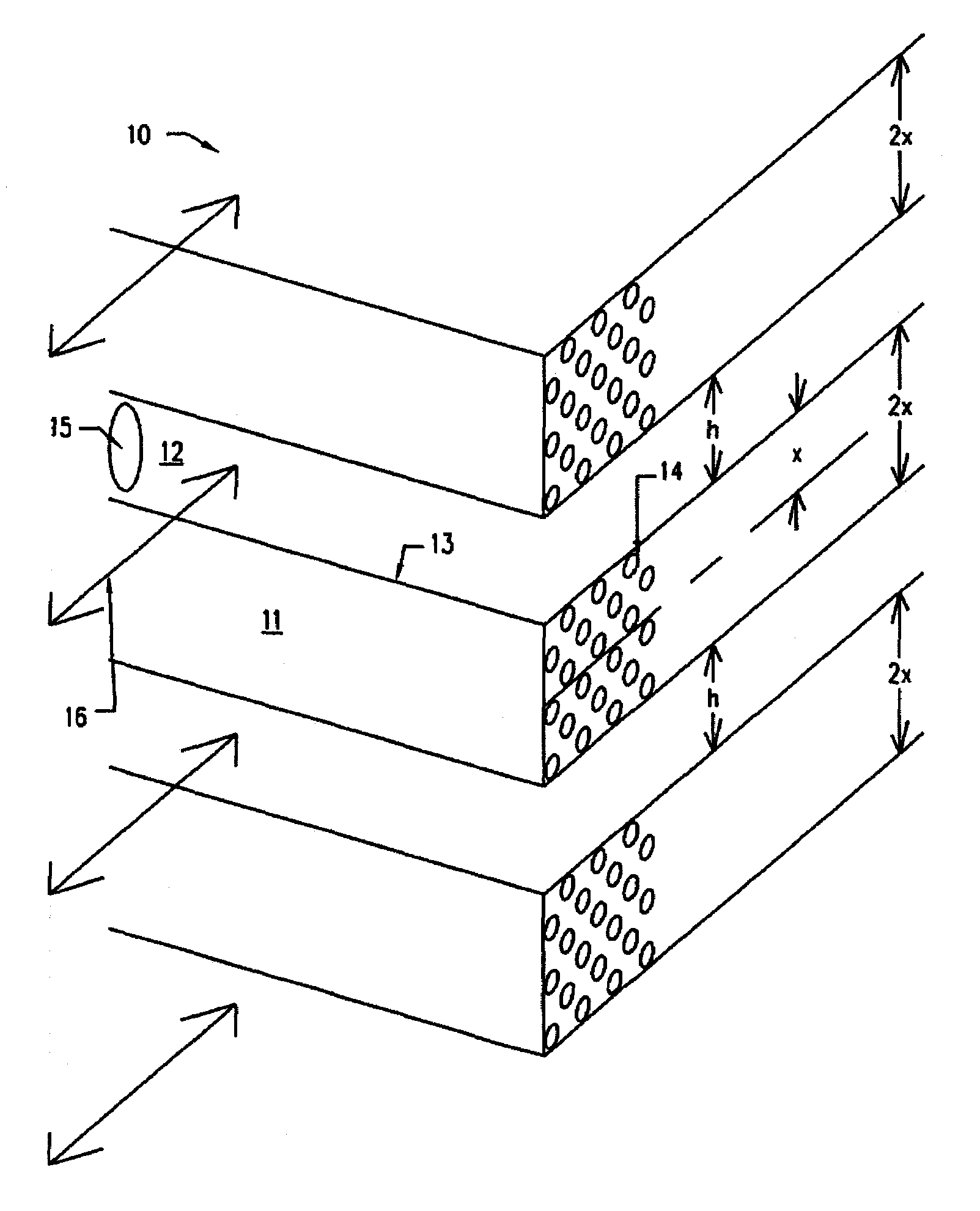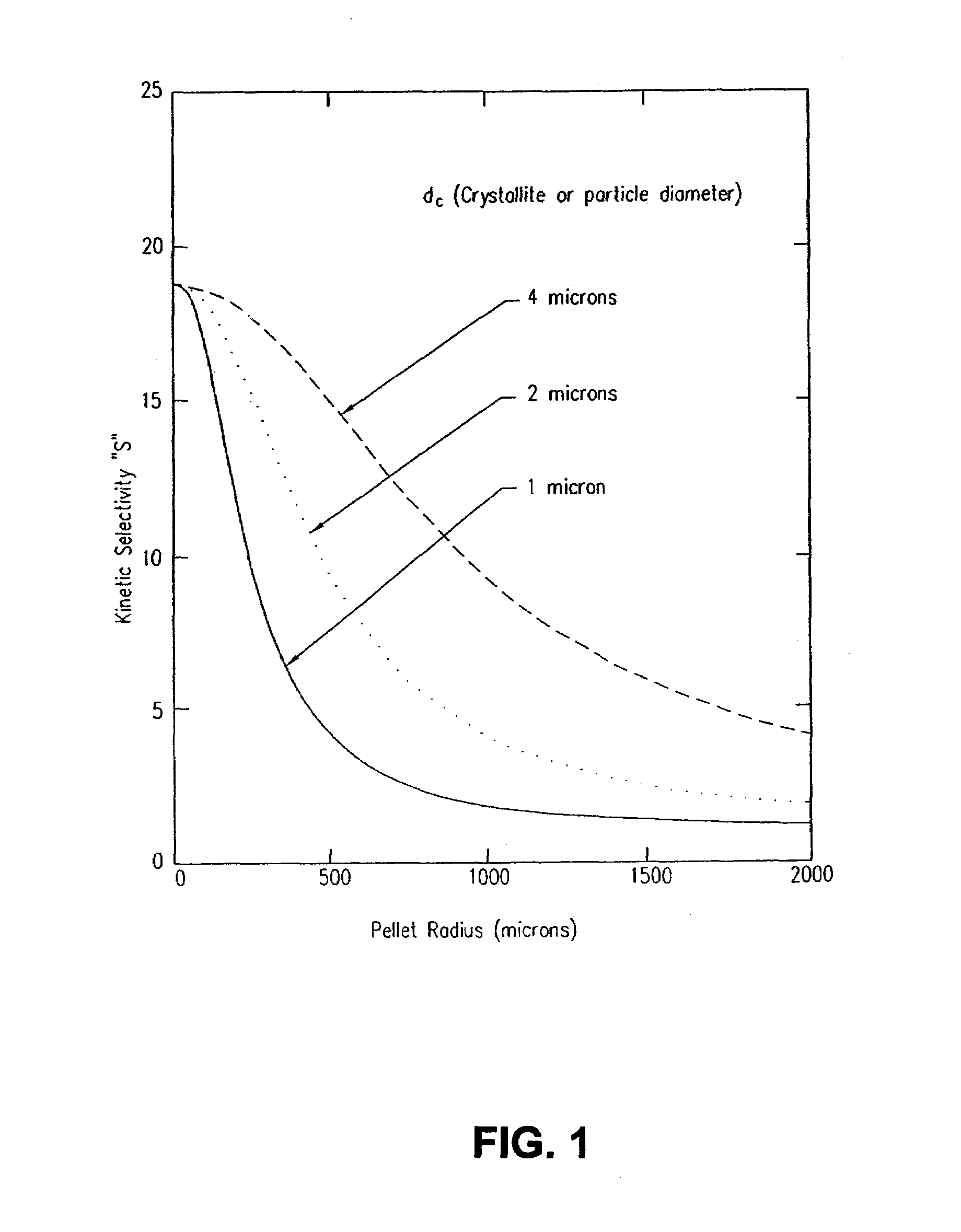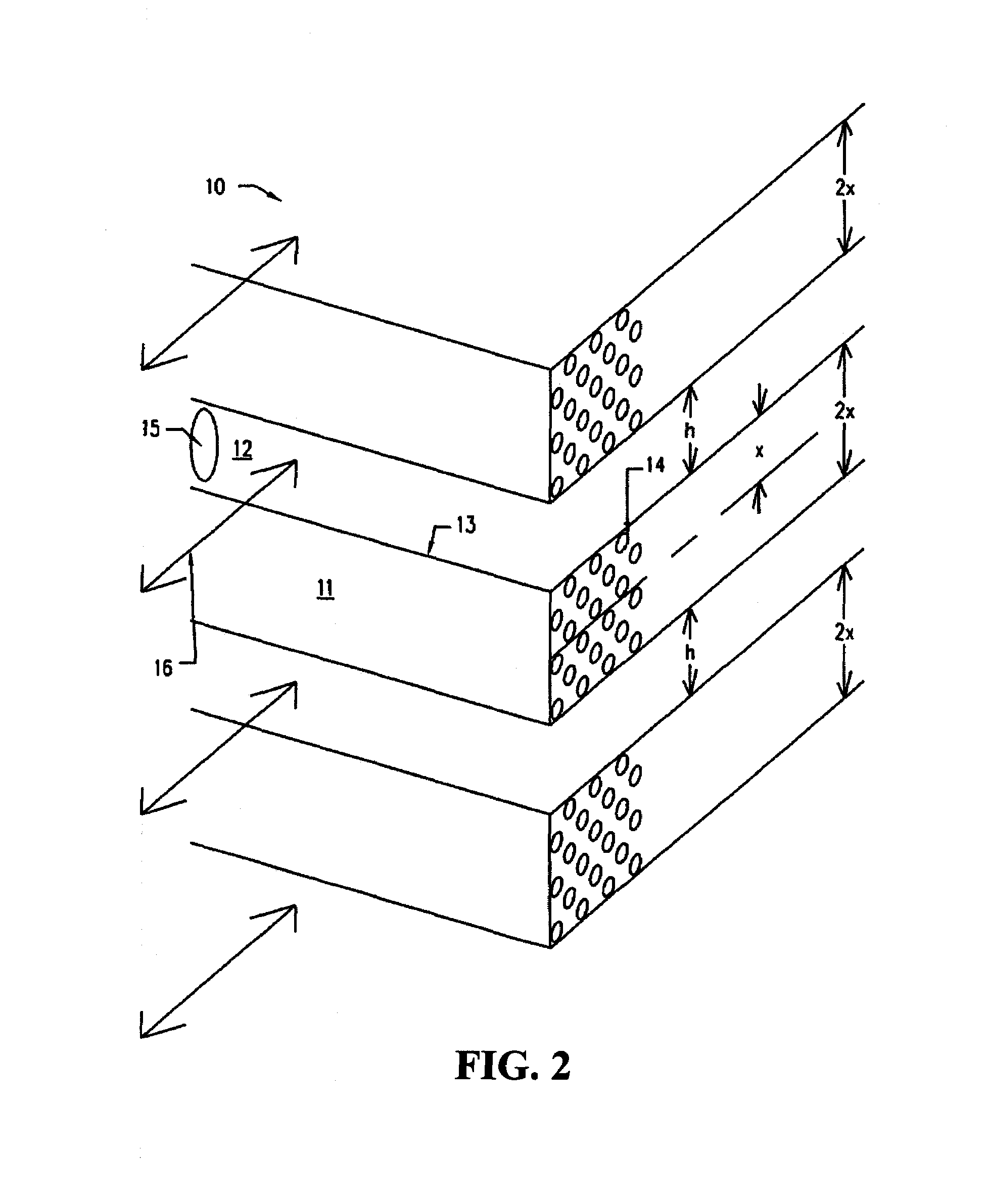Engineered adsorbent structures for kinetic separation
a technology of kinetic separation and adsorbent structure, which is applied in the direction of dispersed particle separation, separation process, chemistry apparatus and process, etc., can solve the problems of inability to achieve kinetic separation at all, and achieve the effect of simple control and simple control facilitating fine-tuning of adsorption cycle speed
- Summary
- Abstract
- Description
- Claims
- Application Information
AI Technical Summary
Benefits of technology
Problems solved by technology
Method used
Image
Examples
example 1
Prior Art
[0050]Air separation for generation of nitrogen-enriched inert gas may be performed over carbon molecular sieves and over narrow pore zeolites such as a modified 4A zeolite. Such narrow pore zeolite may typically be modified to reduce the equilibrium selectivity for nitrogen over oxygen, opposing the kinetic selectivity for oxygen as the fast component and nitrogen as the slow component. The modified 4A zeolite for this application may typically have more rapid micropore diffusion time constants than the previously commercialized carbon molecular sieves. It is of interest for the present invention, both for showing the limitations of conventional pellet packed beds for kinetic-controlled PSA processes operating at higher frequency, and for demonstrating some advantages of the present invention relative to the prior art.
[0051]Table 1 below shows relevant adsorption and micropore diffusion parameters for modified 4A zeolite, as reported in the text “Pressure Swing Adsorption”...
example 2
[0058]FIG. 3 shows the semi-empirical theoretical kinetic selectivity for air separation over a modified 4A zeolite in the adsorbent laminate of FIG. 2, using the adsorption and micropore diffusion parameters of Table 1, and indicating the dependences on adsorbent sheet thickness and crystallite diameter. These calculations are based on the following semi-empirical linear driving force approximation for kinetic selectivity “S”, with additive mass transfer resistance terms in the numerator and denominator for micropore diffusion, macropore diffusion and film resistance.
[0059]S=rc215·KB·DcB+X2·[1(6·ɛp·Dp)+28.235·Dm]rc215·KA·DcA+X2·[1(6·ɛp·Dp)+28.235·Dm]
Adsorbent laminate structures according to the present invention, as shown in FIG. 2, may be readily manufactured in the first approximate thickness range of 150 μm>X>50 μm, such that X=100 μm, S / So>0.9 (F>9) may achieved for all crystal sizes in the range of 1 μm upward, while S / So>0.95 (F>19) may achieved for all crystal sizes in the ...
example 3
[0063]Example 3 considers a kinetic-controlled adsorptive separation with faster time constants and somewhat stronger equilibrium adsorption. The specific parameters used are
[0064]tcA=0.025 seconds tcB=2.5 seconds
[0065]KA=22 KB=26
[0066]These adsorption and micropore kinetic parameters may apply to the industrially important application of propylene / propane separation. Useful kinetic and equilibrium data is provided for that separation over AlPO-34 and AlPO-18 adsorbents in U.S. Pat. Nos. 6,730,142 and 6,733,572, both by Reyes et al. That data suggests that this olefin / paraffin PSA separation may best be conducted at elevated temperatures of 423 K or even higher, with the present model indicating the desirability of such elevated temperature to avoid excessively high values of KA.
[0067]FIG. 4 shows the theoretical kinetic selectivity for the adsorbent laminate of Example 3 indicating the dependence on adsorbent sheet thickness for the above parameters. It is seen that adsorbent layer...
PUM
| Property | Measurement | Unit |
|---|---|---|
| thickness | aaaaa | aaaaa |
| size | aaaaa | aaaaa |
| size | aaaaa | aaaaa |
Abstract
Description
Claims
Application Information
 Login to View More
Login to View More - R&D
- Intellectual Property
- Life Sciences
- Materials
- Tech Scout
- Unparalleled Data Quality
- Higher Quality Content
- 60% Fewer Hallucinations
Browse by: Latest US Patents, China's latest patents, Technical Efficacy Thesaurus, Application Domain, Technology Topic, Popular Technical Reports.
© 2025 PatSnap. All rights reserved.Legal|Privacy policy|Modern Slavery Act Transparency Statement|Sitemap|About US| Contact US: help@patsnap.com



